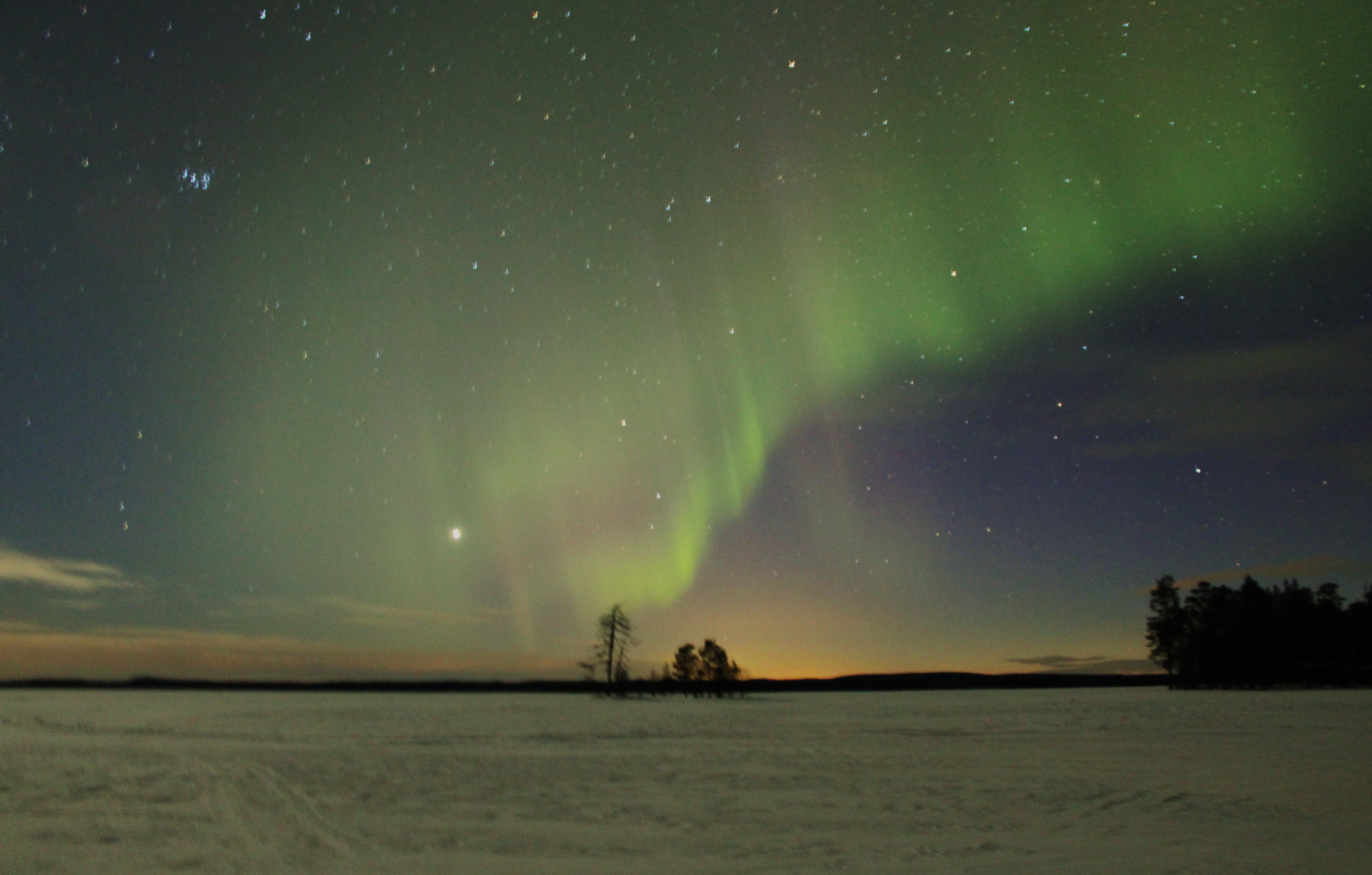Lapland and Saamiland is a world of thousands of stories. The stories have survived from generation to generation through spoken language and most of them have their roots in the antiquity times. Many of these stories cannot be found on the internet yet, and the only way to access them is to keep your ears open when the local people open their mouths. Unfortunately, many stories have been forgotten over the past generations and will never be heard again. By bringing old stories that are in danger of disappearance or have already been forgotten by the general public, to the internet, they will hopefully get a new life and more and more people will be able to learn about them.
In Finland and Lapland the people might have heard the song about Halti’s Wedding, which tells the sad story of a wedding celebration with a catastrophic end in the northernmost of Finland, in the Halti area. Halti is the highest fell in Finland, 1,324 m high, situated on the border between Finland and Norway.
The authors Asko Kaikusalo and Yrjö Metsälä have written a book named “Tarujen tunturit”, translated topic: The Tales of the Fells. In this book they reveal the background to the catastrophic wedding.
This is how the story goes:
“The icy wind sweeps in from the north. It retrieves its icy breeze from the shores of Ruija (Ruija is the northern part of Norway facing the Arctic Ocean). The icy wind gathers more strength from the wide Arctic expanse, and finally swooshes along the slopes of Saana. In the village behind Saana a whining sound is heard and people tell Saana fell is crying again… Saana is a fell in Enontekiö municipality in the “arm” of Finland.

At the time of this story this was the land of big trees and a lot of snow and here lived only giants. The giants lived in different villages. Each one lead their own tribe, they went fishing in the Arctic Ocean and made enormous campfires. Today the forests have disappeared, fallen into the lakes and turned into waterlogged skeletons at the bottom of the lakes, but the flames from the bonfires remain. The bonfires of the giants rose into the sky and they still nowadays can be seen as northern lights in the nights.

In the fells of the “arm” of Lapland, that is, the tribe of Halti, the Halti äijä (=old man) was in charge. The village was located near Porojärvi, a sea in the northernmost of Lapland, but the “Haltians” often made adventures war expeditions against the Ruijians and other tribes in Lapland.
The Saana fell was one of the giants of the “arm”. He was tame and grumpy but a very handsome young man. He fell in love with his neighbor Malla, an incomparable maiden. After the romance had started, the young couple thought they’d better get married. The wedding was planned and organized to take place in Porojärvi Church. An old vice man/giant from Norway, Paras, was asked to be the consecrator, and people from all over Lapland were invited as guests. You can see the “arm” of Lapland here. Porojärvi is situated east from Kilpisjärvi in the wilderness of the fells.

However, there was one crowd that could not be invited: The enemies included the voluptuous Pältsa of Sweden, who had also struck his eye at the beautiful maiden Malla. His allies were the vicious old maids; “pohjanakat”, some wizards of the Arctic Ocean. Together, these decided to do everything they could to prevent the wedding.
The guests filled the church in Porojärvi. The wedding was going to start and suddenly everyone was chocked: Pältsa stepped through the door and screamed: “I wasn’t invited, but I came to see it anyway, because I don’t think everything will go as planned.” At that moment, the north wind began to blow real hard.
Paras, the norwegian consecrator, asked Malla and Saana to approach. But as the couple approached the altar, the storm reached top speed . The wind howled in the church tower and the whole building started to shake. An immense mass of ice began to roll from the north towards Porovuoma and Porojärvi. In panic, the church people escaped the church. Not everyone was able to reach their homes before they were covered under an ice sheet. The bride to be, Malla, fell to the floor, but Saana lifted her up in his arms and rushed towards the shore of Lake Kilpisjärvi; a small lake in the west. There they both froze side by side; Saana even stiffer, and Malla near her mother, all facing south. From the tears of the mother and daughter, the clear-water Lake Kilpisjärvi grew to its present size.
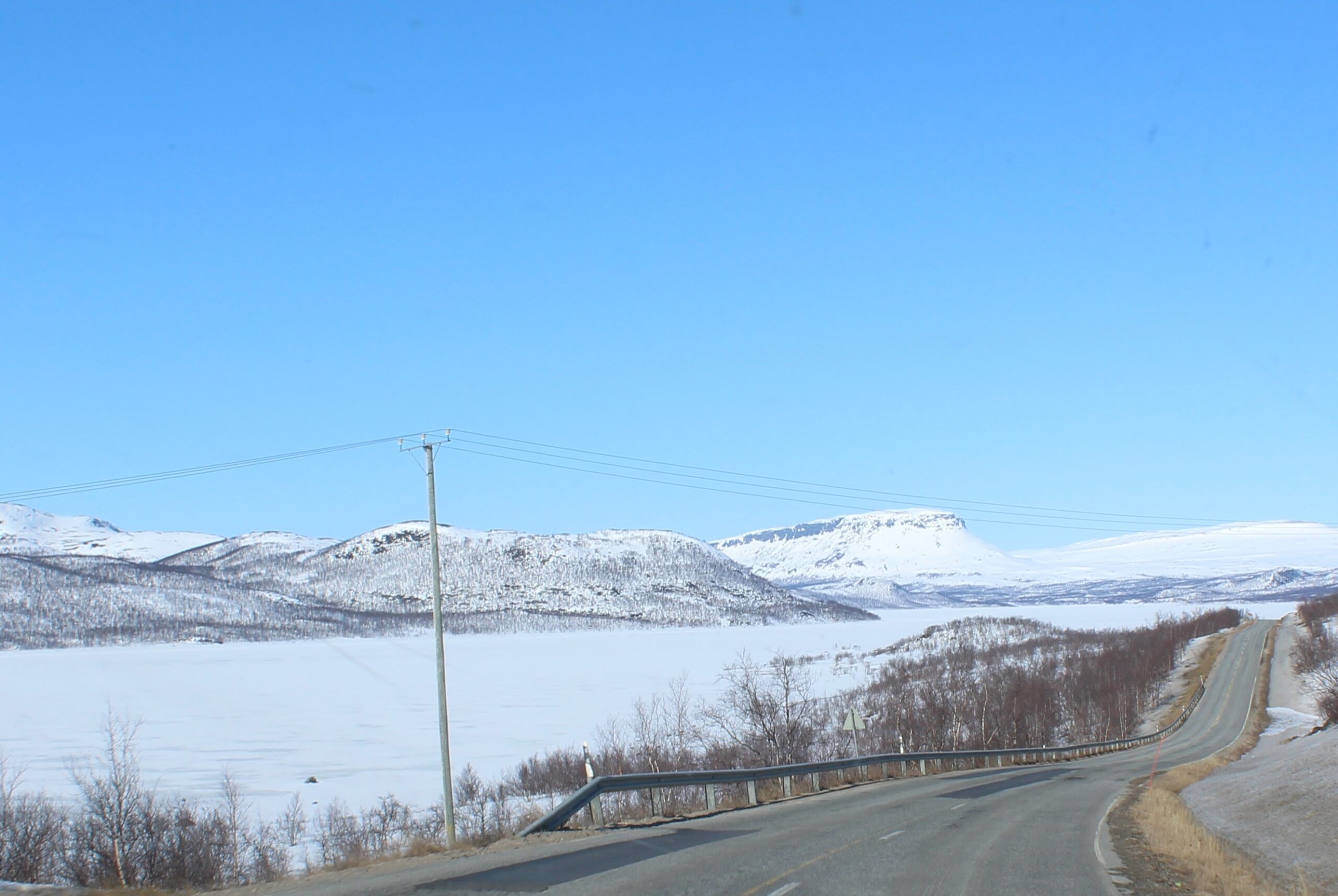
Pältsa also ran back to his own country Sweden. His allies, the furious maids “pohjanakat” could not any longer control their actions, and so Pältsa also was covered up until his ears by the ice. Only the crown remained visible.
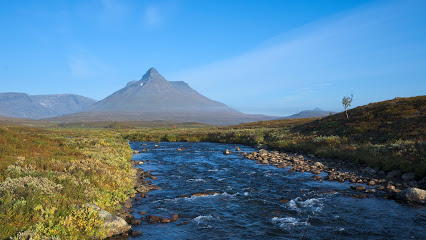 (picture from Wikipedia)
(picture from Wikipedia)
This was the beginning of the Ice Age
Thousands of years later, these ice masses melted, and the giants were revealed. They could no longer move. But memories of those weddings are still to be seen in Lapland. As the Lapland people escaped in panic from the church of Porojärvi all over Lapland, their colorful clothes were torn in the wind and spread all over the slopes of the fells, expanses and over the valleys. Every autumn, the same splendor of color floods the fell in the form of colors during the vibrant autumnal period; “ruska”, in Lapland.”
If you ever walk the fells of the “Arm of Lapland”, you will encounter these giants, the gloomy Saana and the enchanting Malla.
In this picture you see Malla fell behind me. It is nowadays the Malla National Park.

Here is a picture of me in Norway with all the high fells in the background. That is the area where Paras/Barras and Pältsa can be seen.

Far to the Swedish side you can see the grizzled Pältsa and next to him on the Norwegian side the sharp-witted consecrator, Paras/Barras. 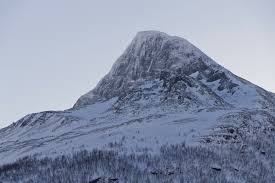
On this picture I have marked Pältsa. Paras/Barras fell is just north of Pältsa behind the border to Norway.

Even after the ice age, these fells – like fells everywhere – have experienced countless events, both fabulous and true. And if you go there with the right, compassionate receptive mind, you may get a glimpse of something of the fairytale-like innermost of the fells.




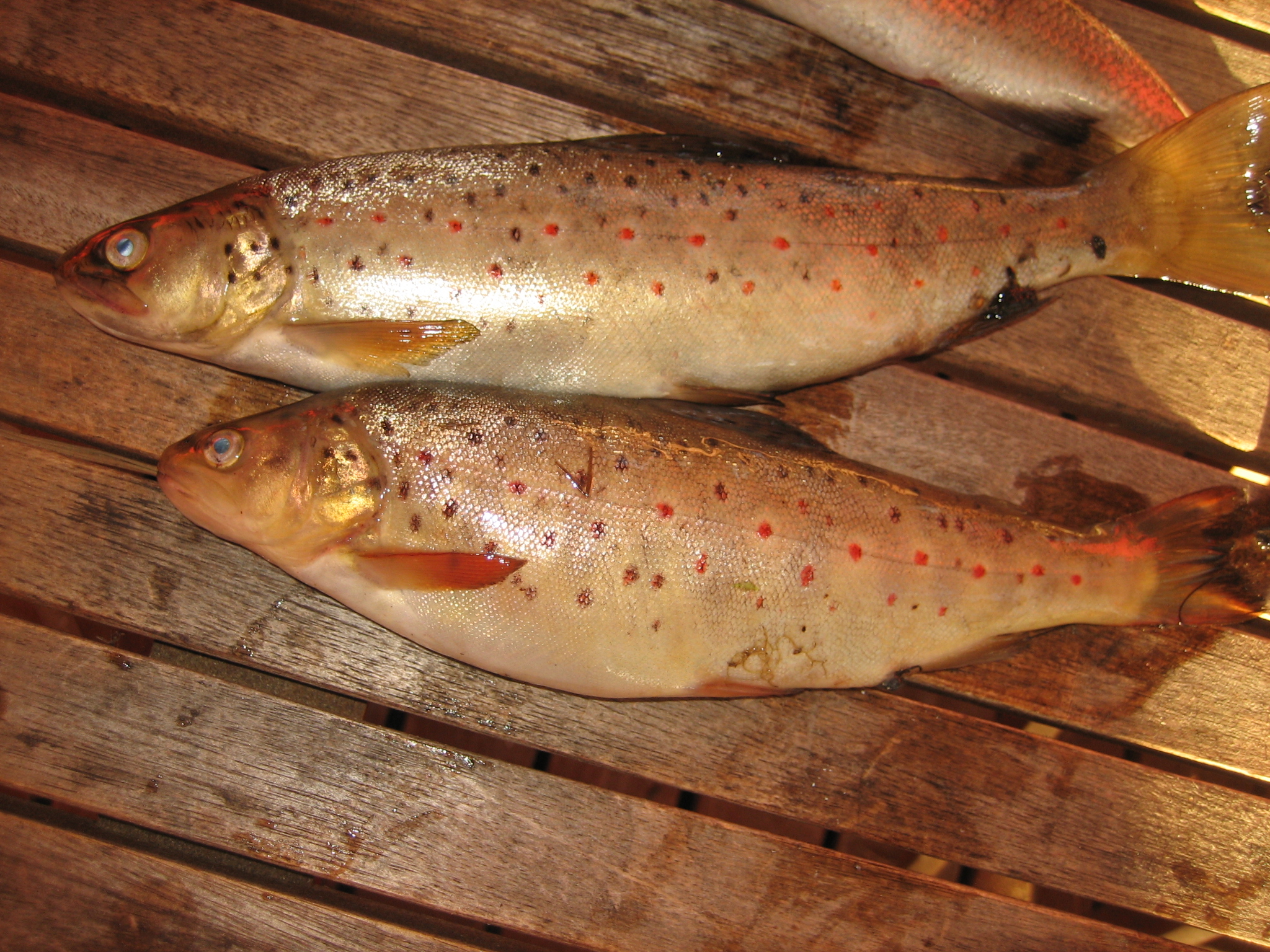







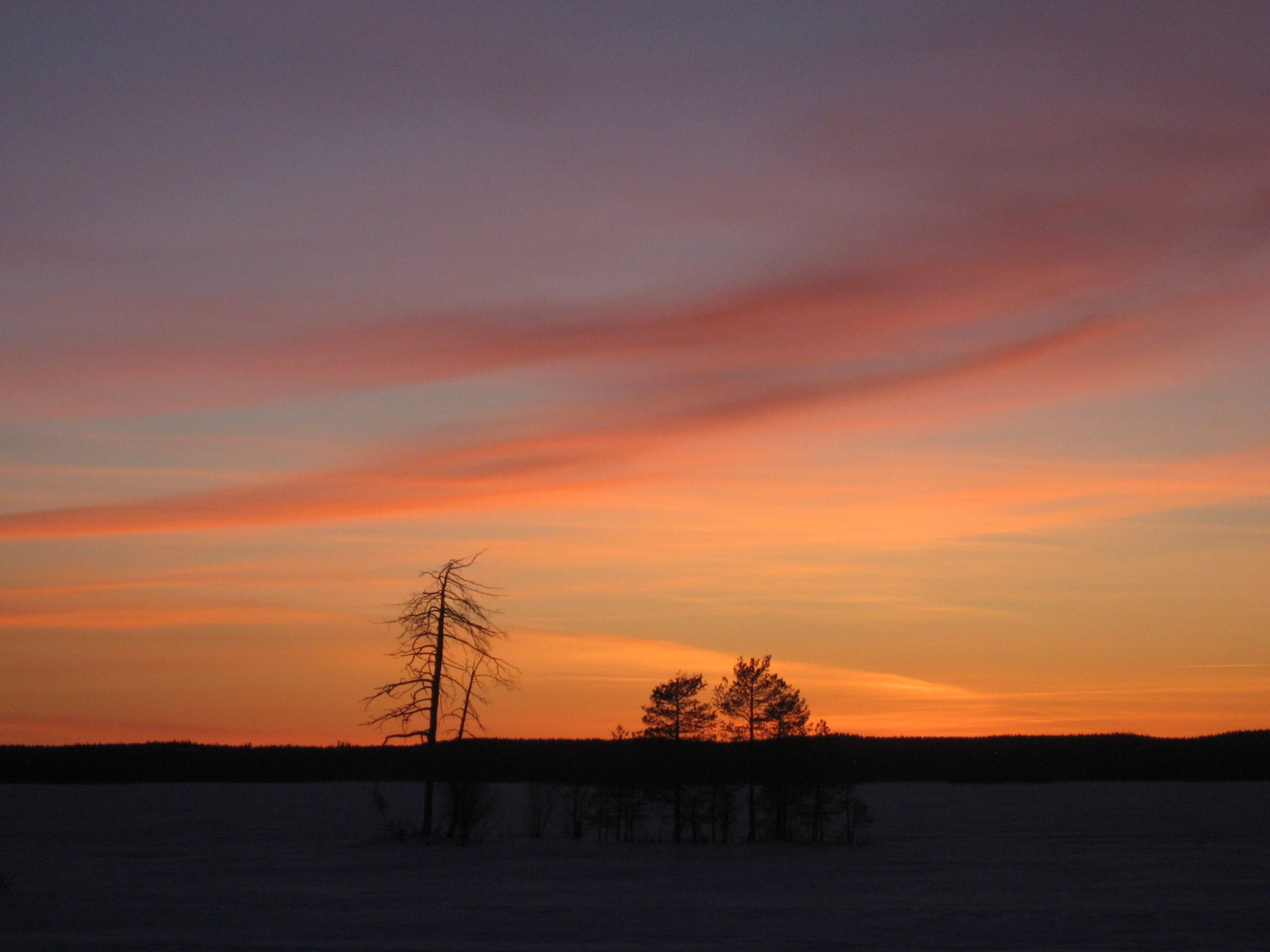

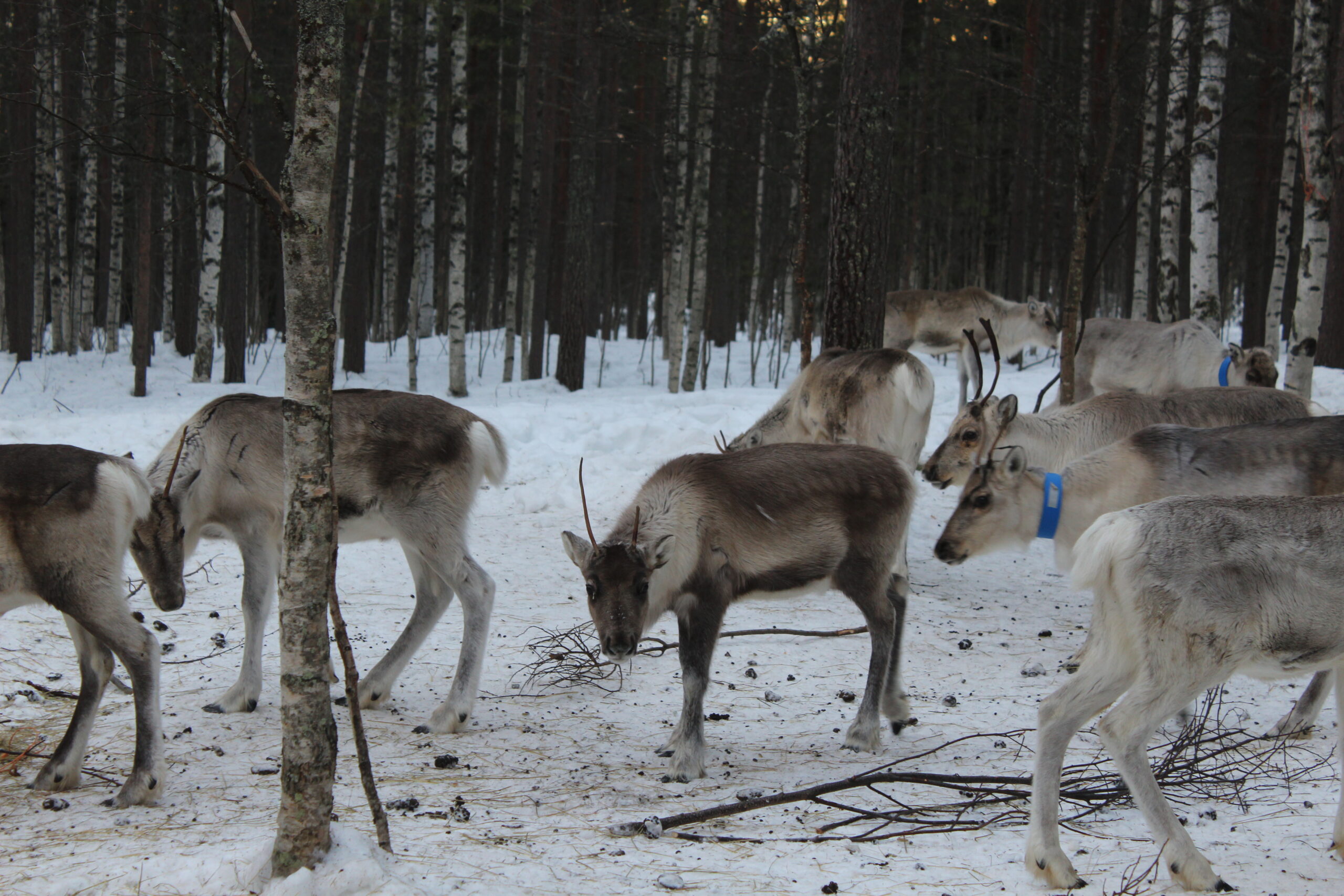



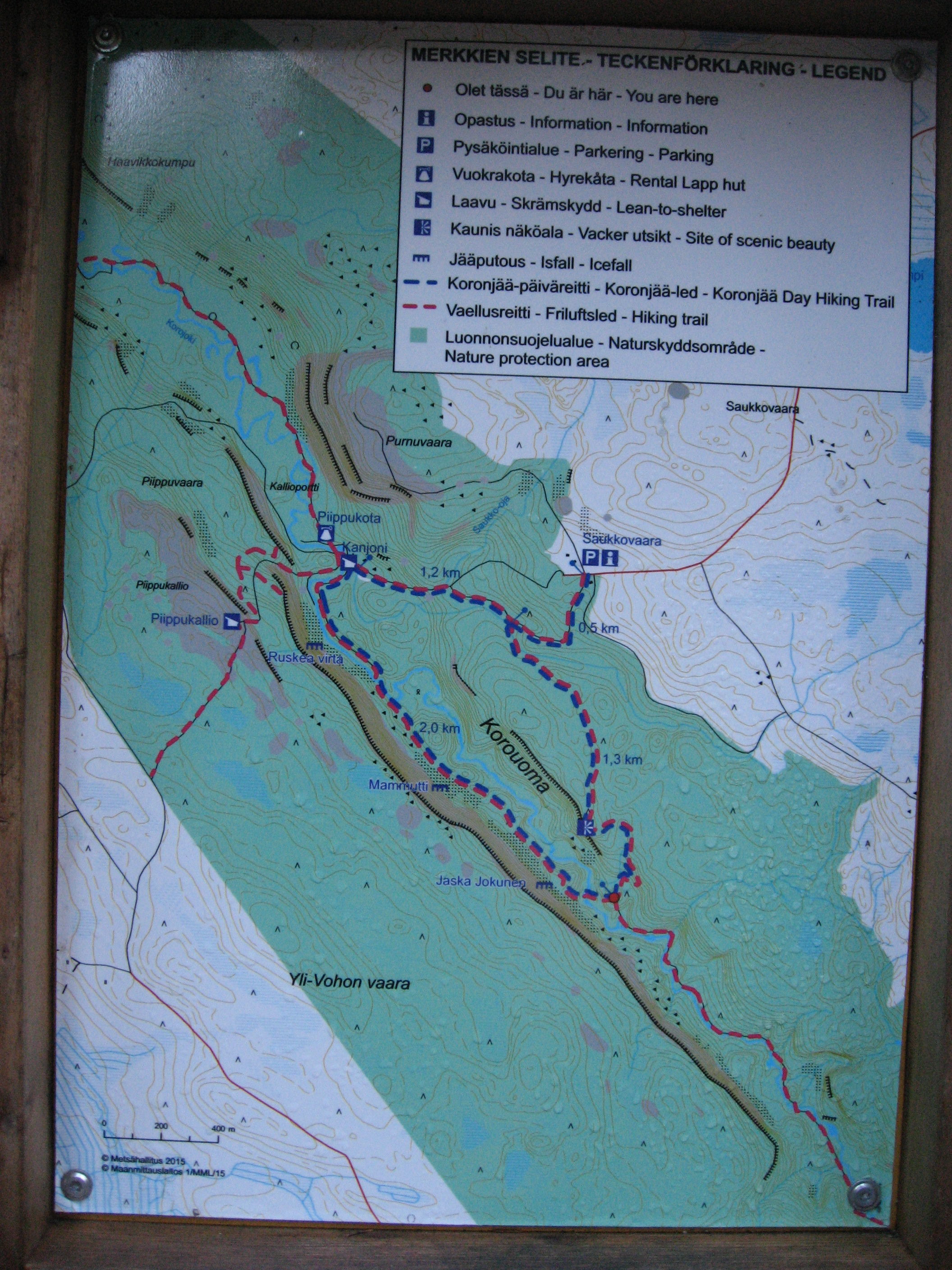
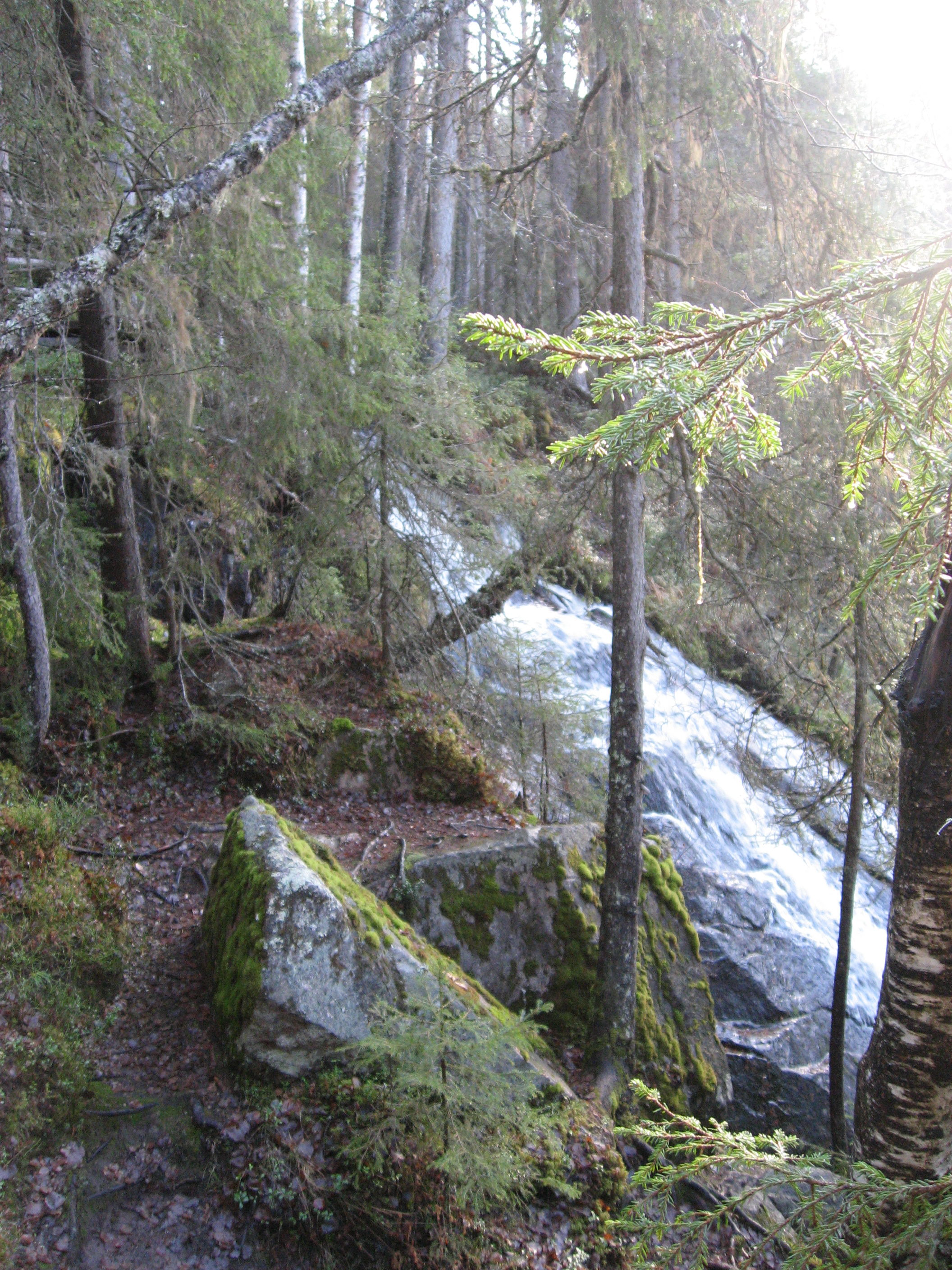

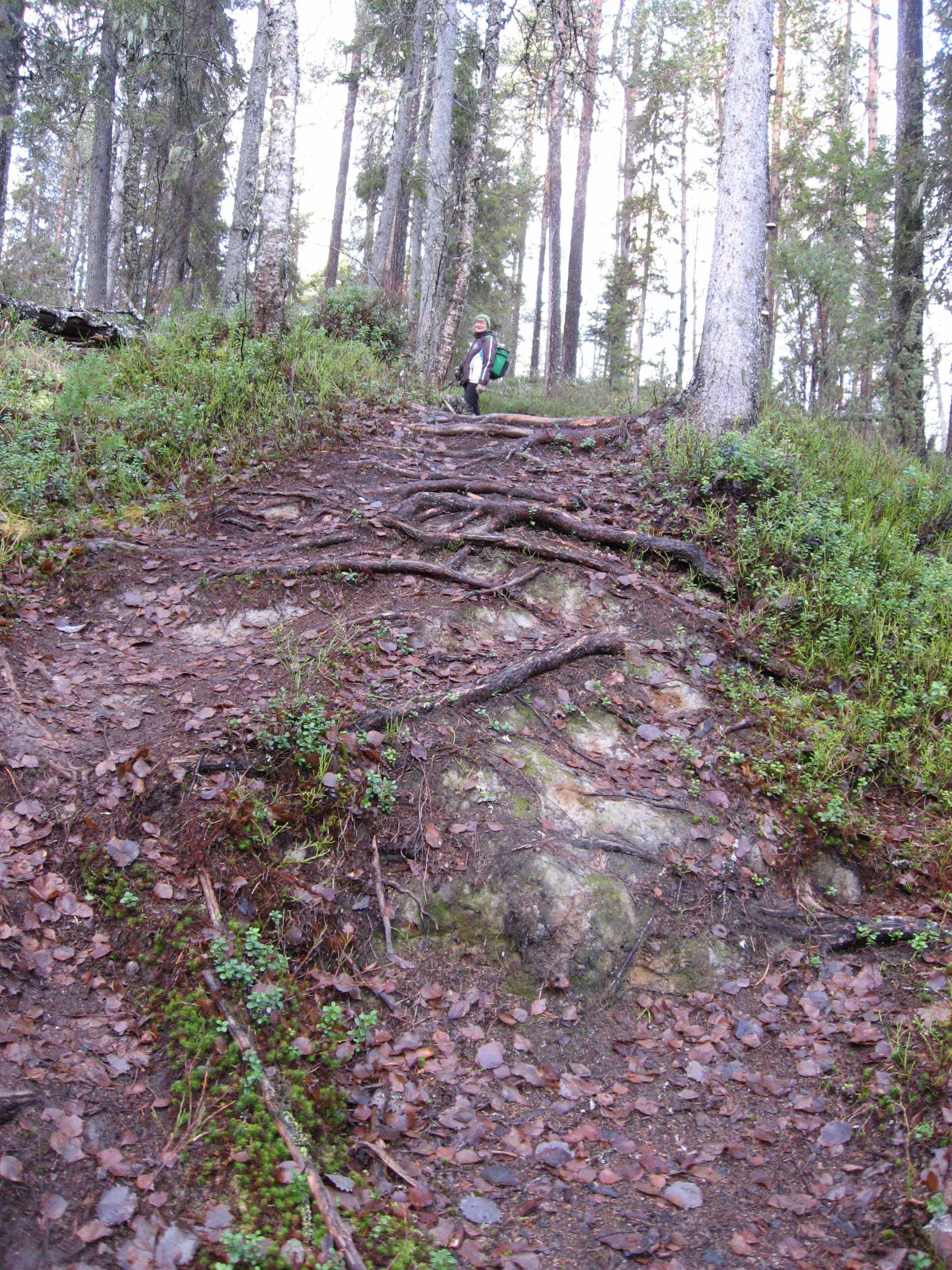

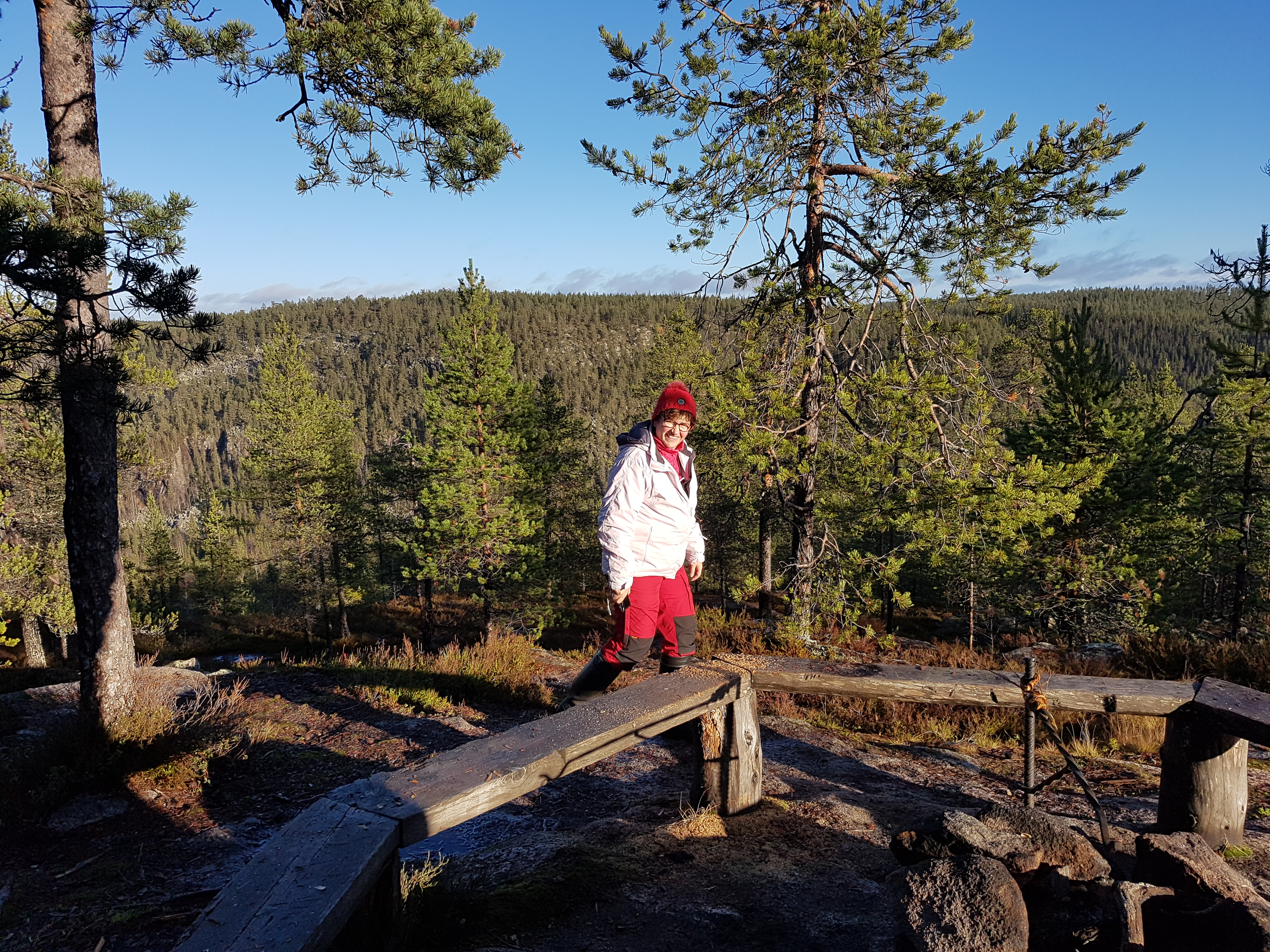

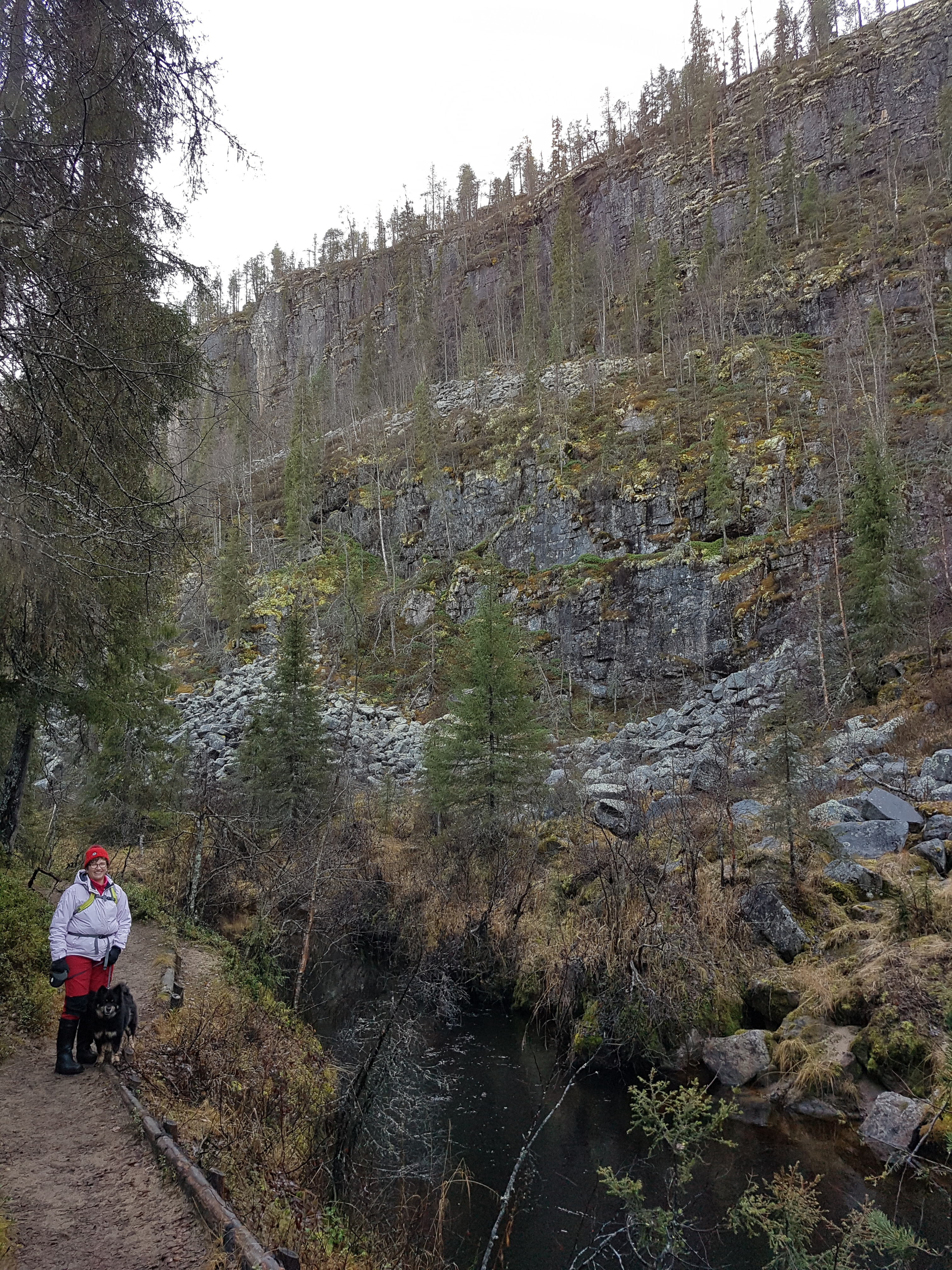
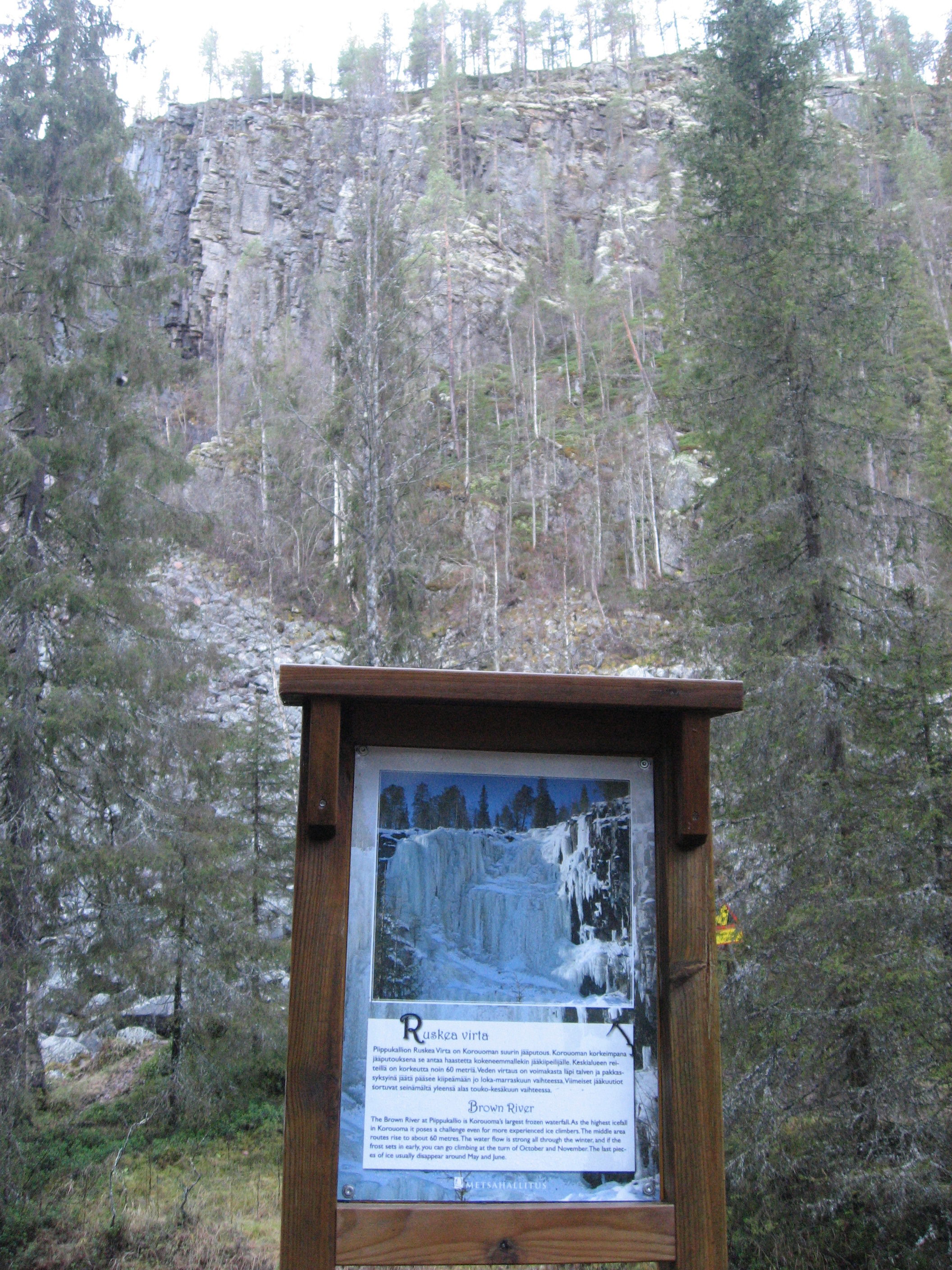

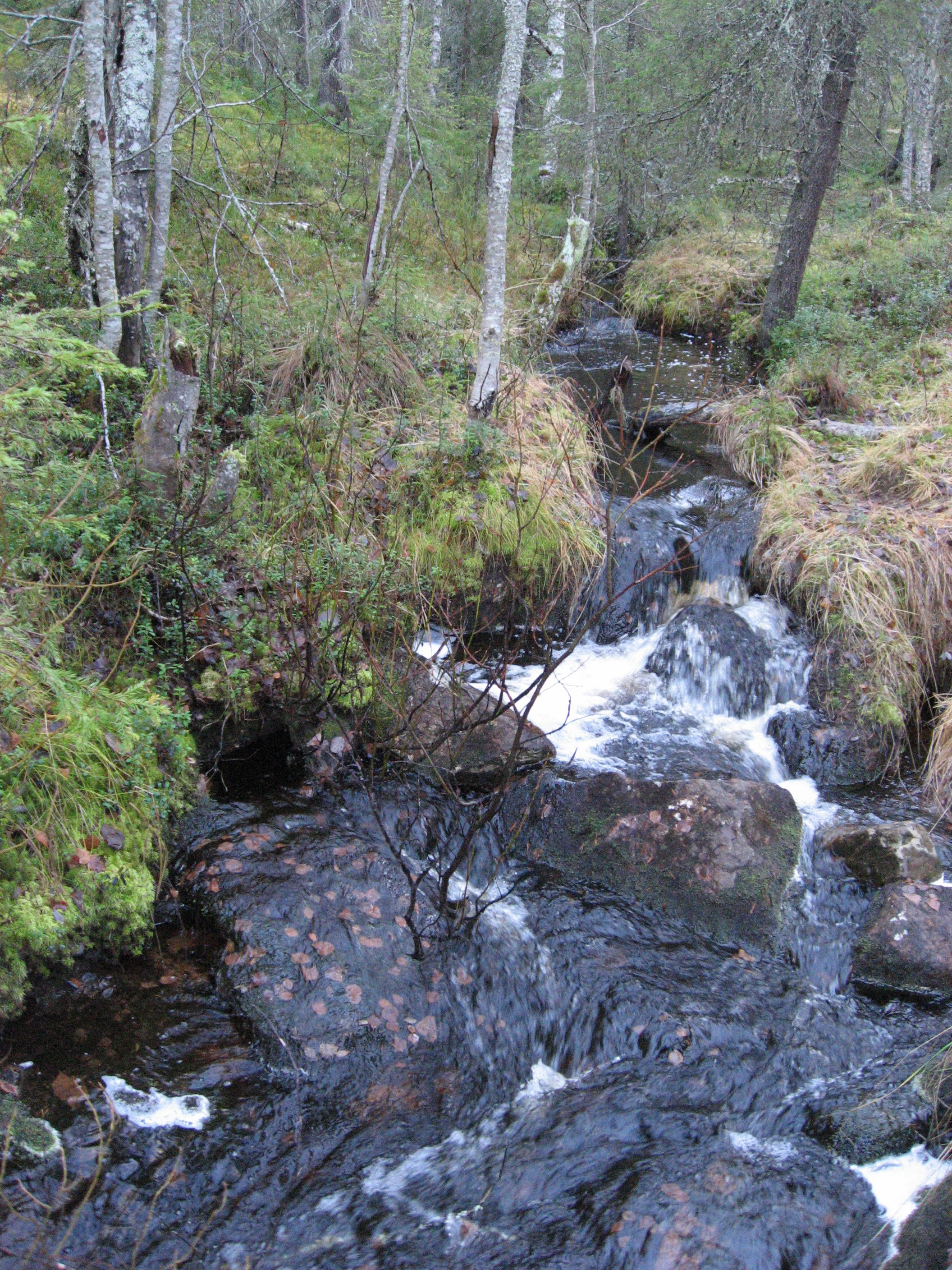


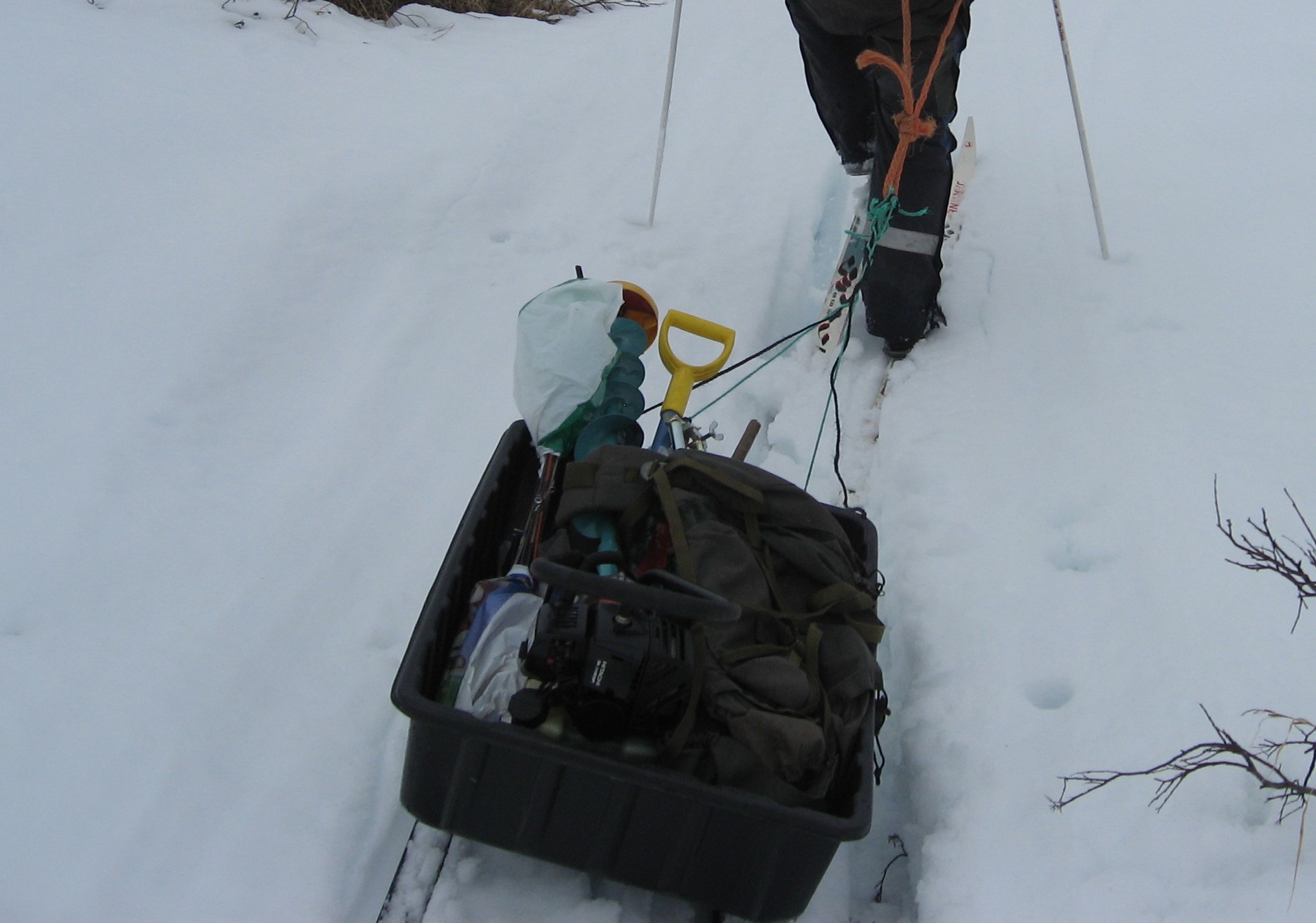







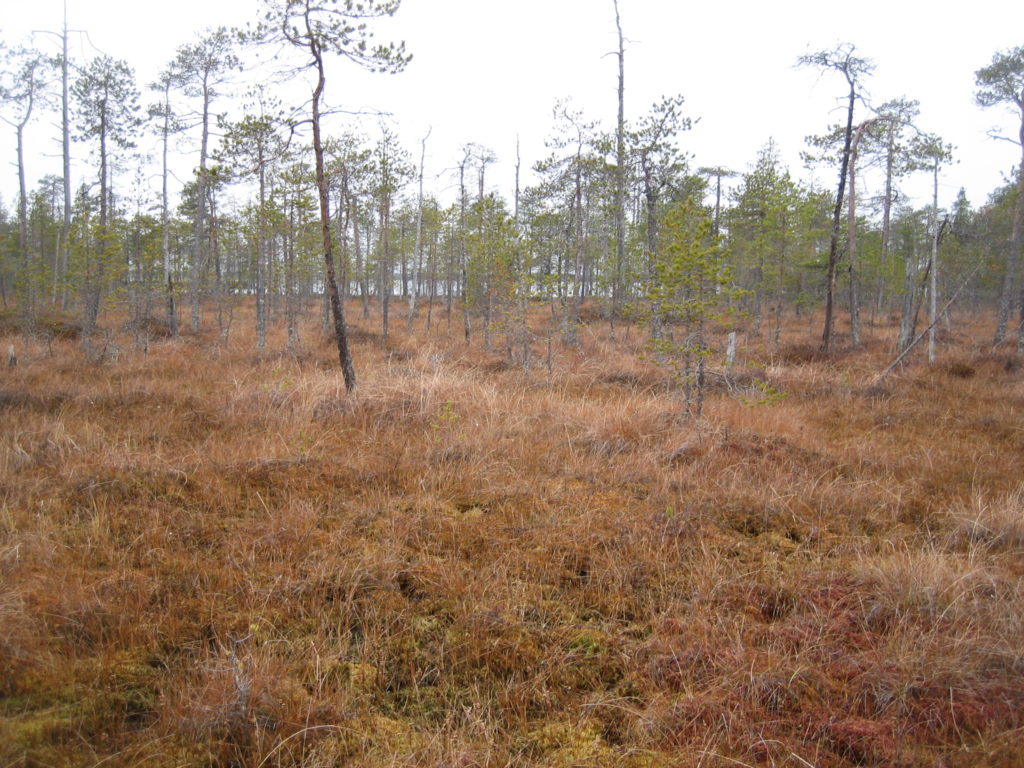

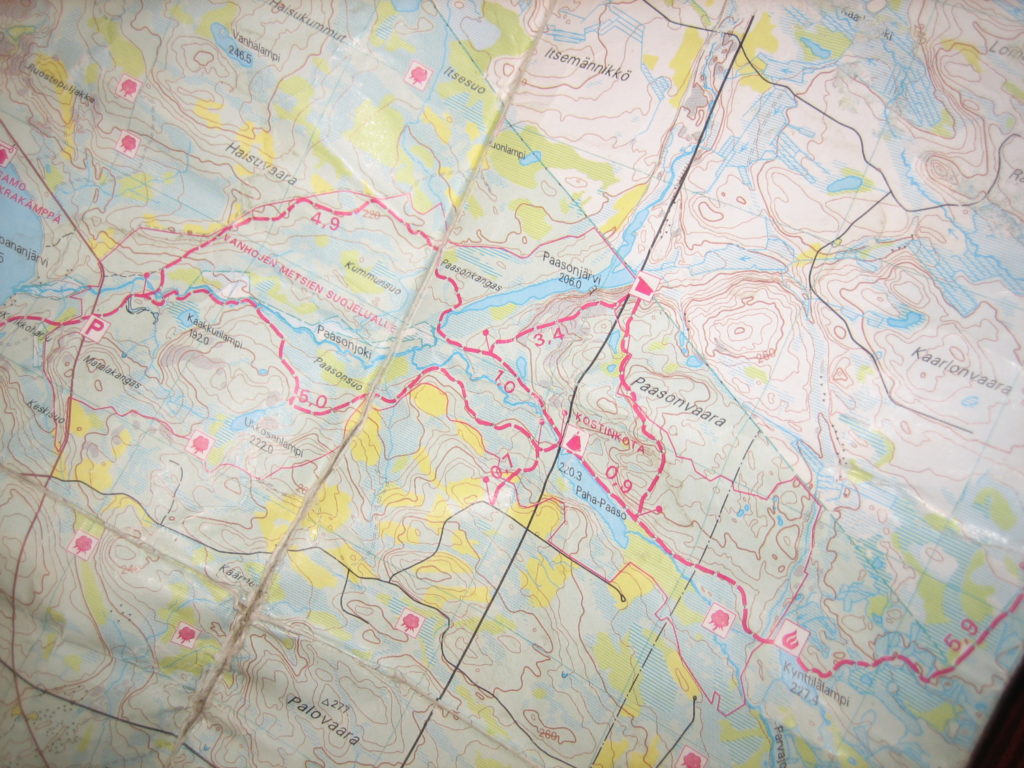
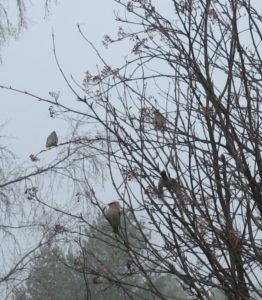
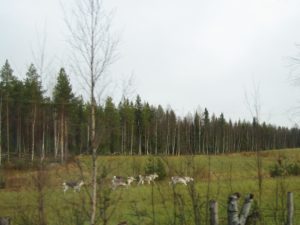

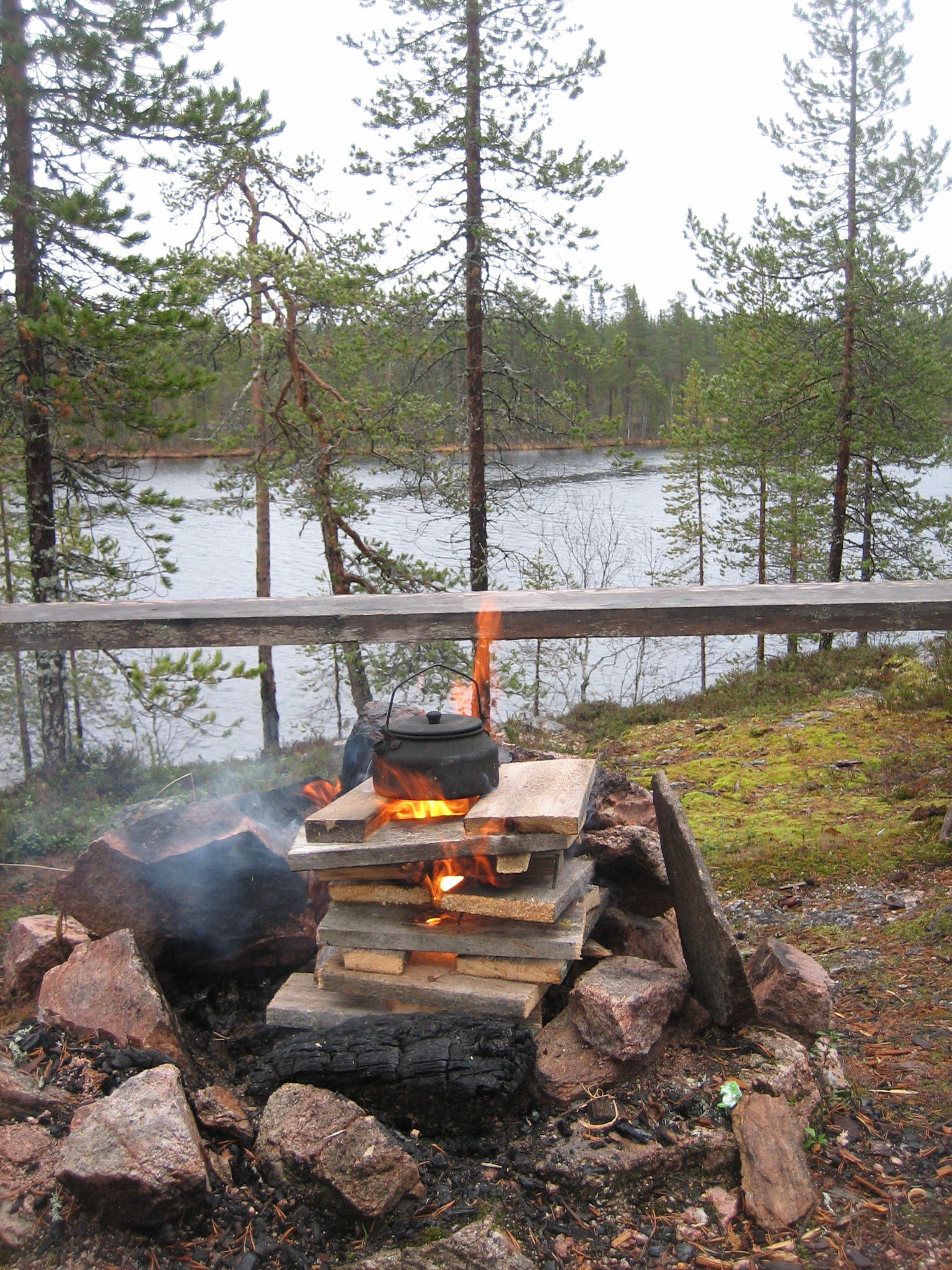
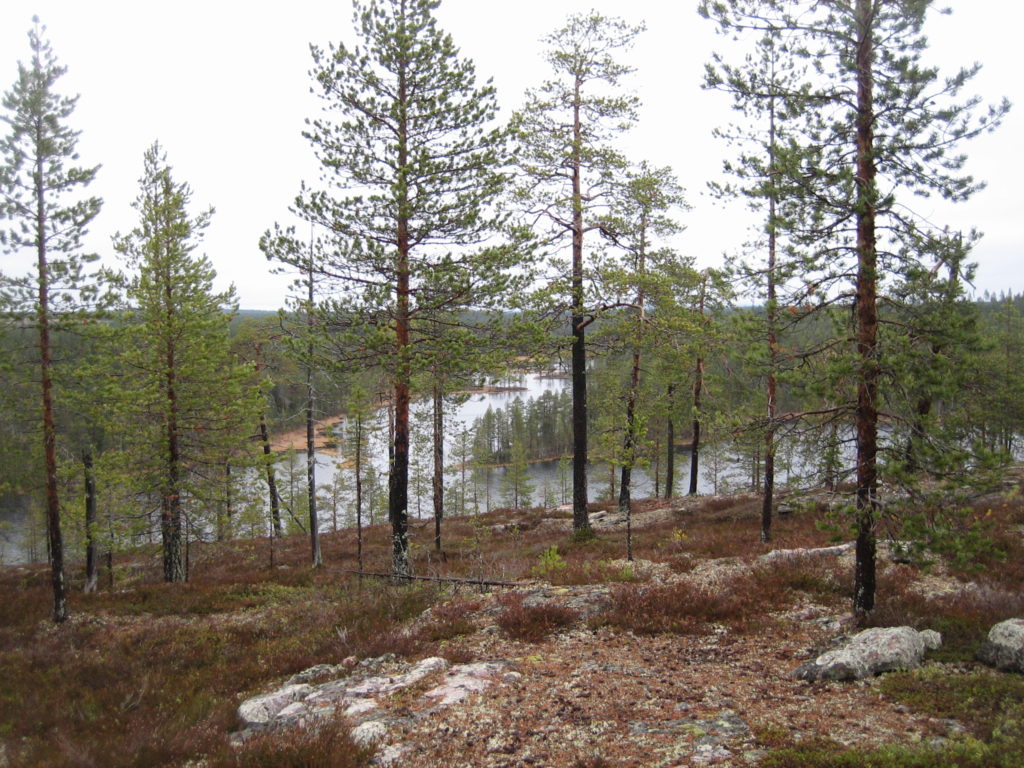
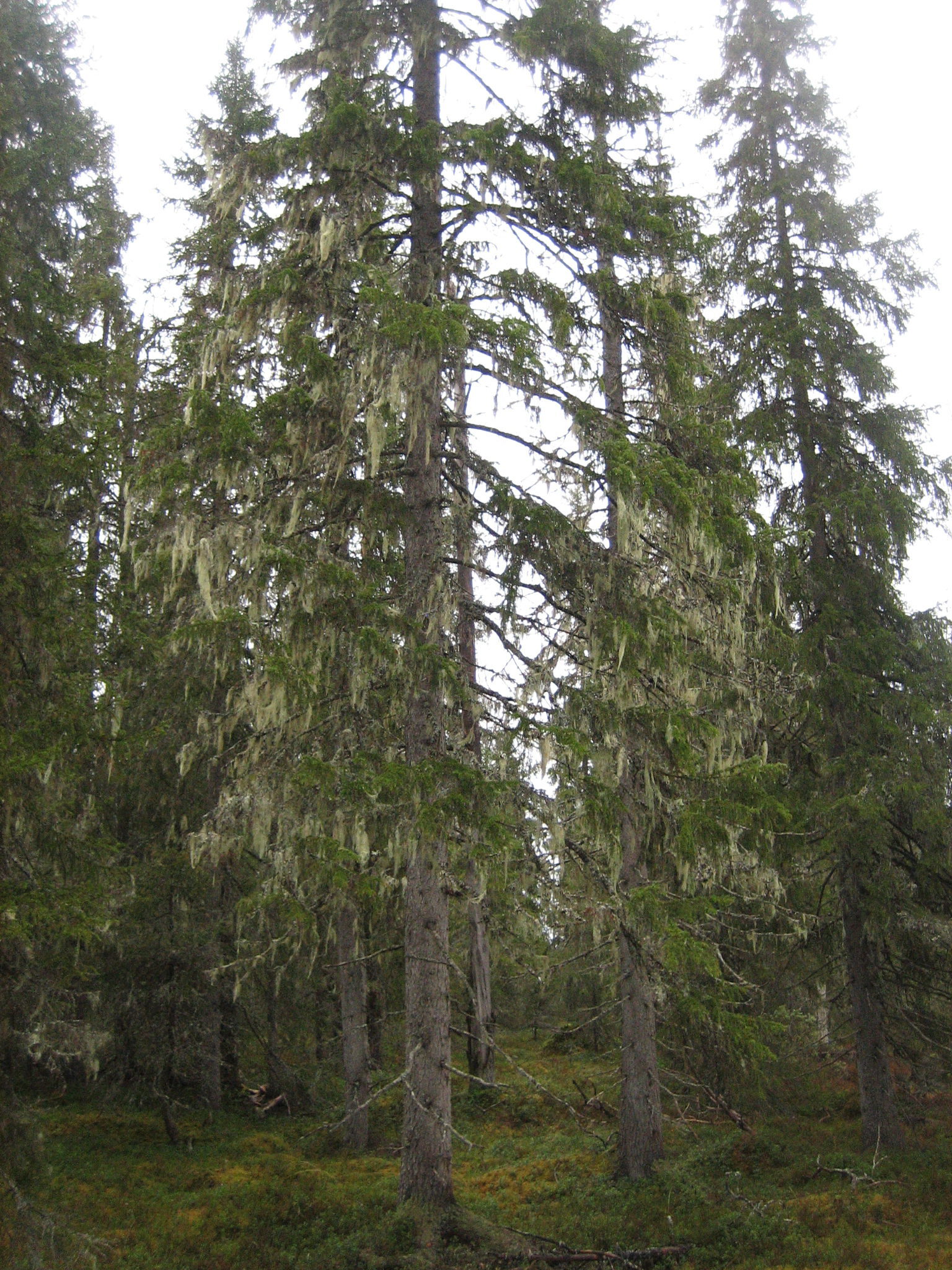
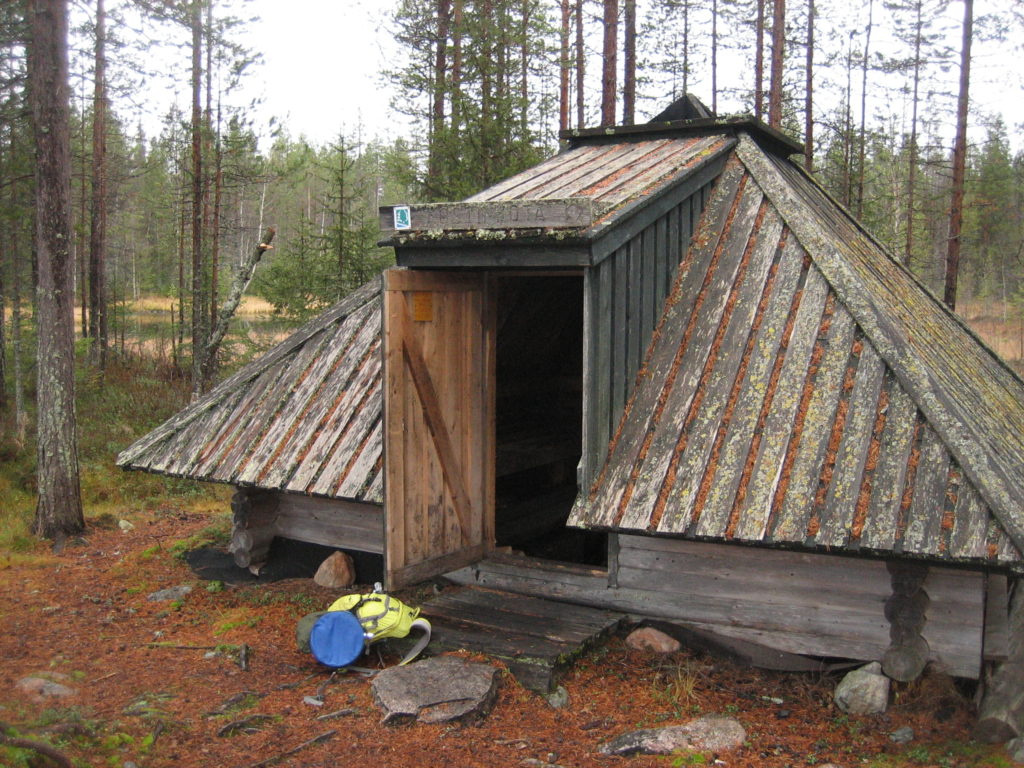

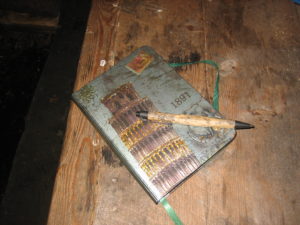

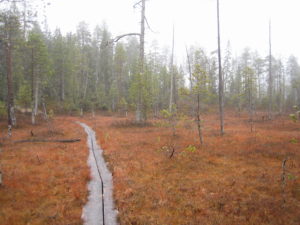
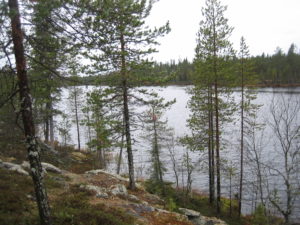
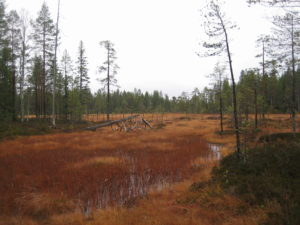
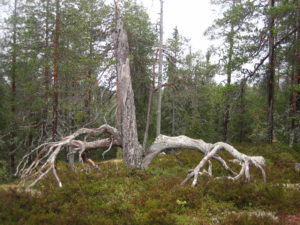
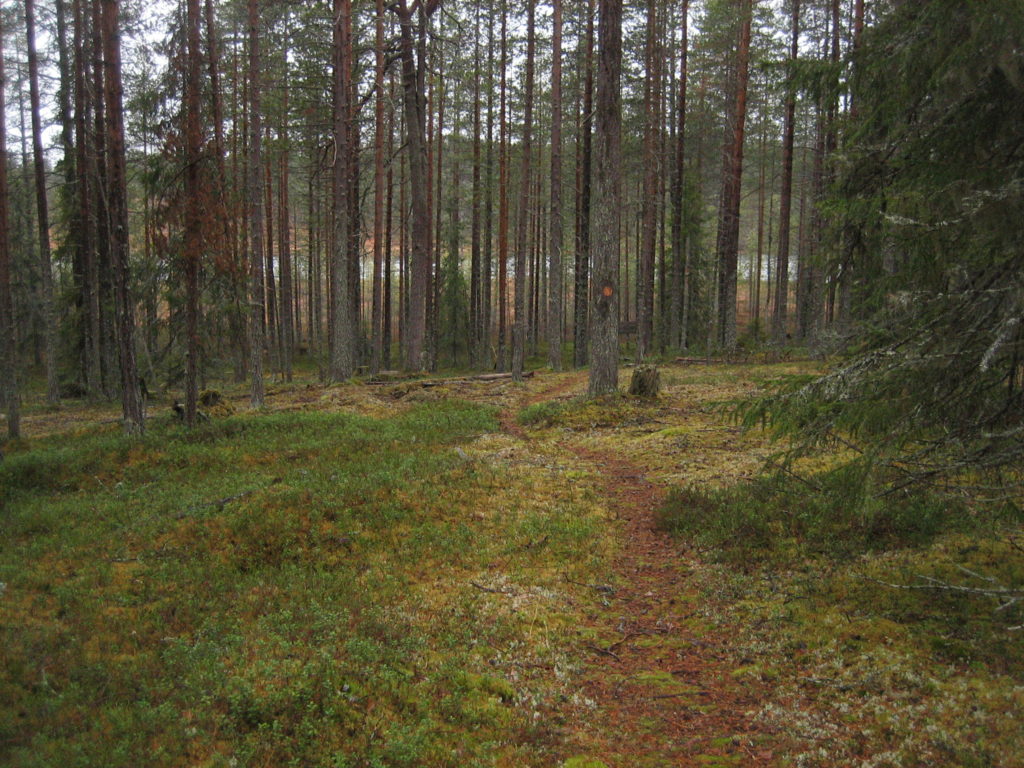
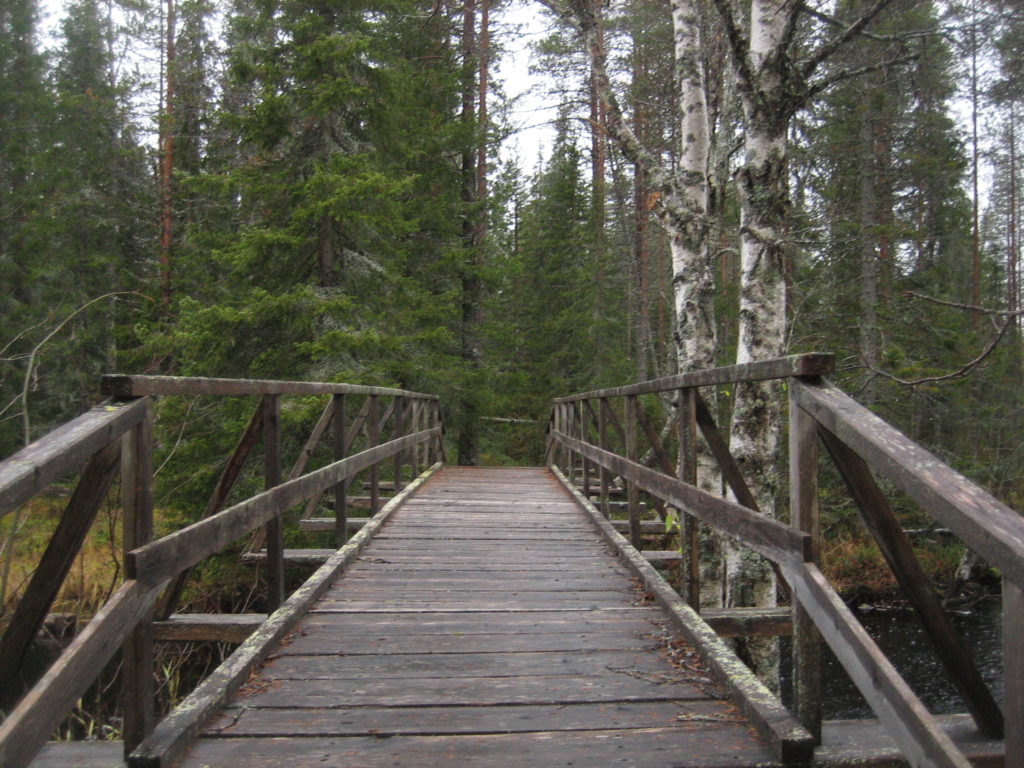
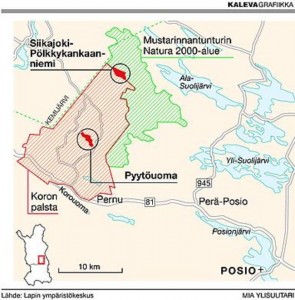
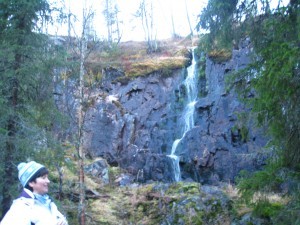
 To find this Pyytöuoma, you drive by car along road nr 81 from Rovaniemi towards
To find this Pyytöuoma, you drive by car along road nr 81 from Rovaniemi towards 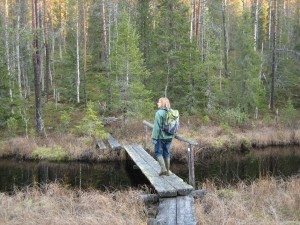
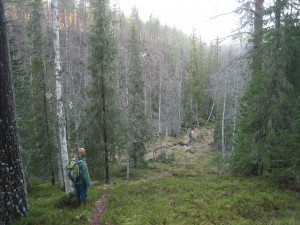
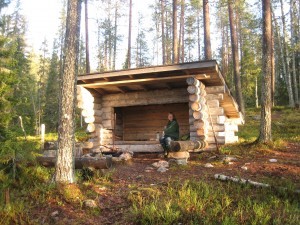
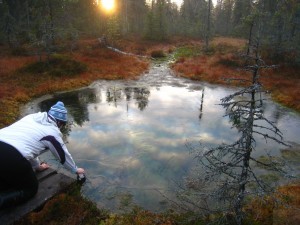
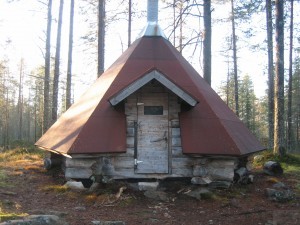
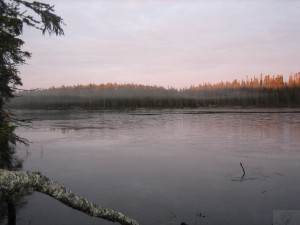
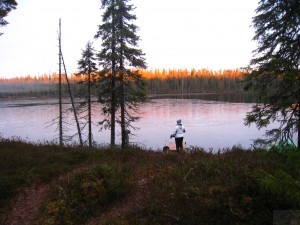
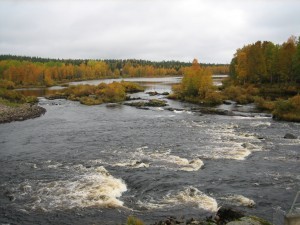
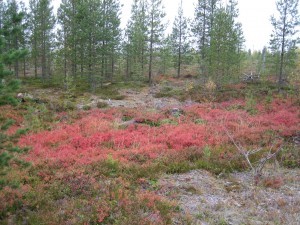 his phenomenon starts when the daylight hours decrease and the weather gets colder. Plants start to prepare for the long winter, the chlorophyll starts to move from the leaves into the branches, trunk and roots and this makes the colour cells in the leaves glow. The more the night-time temperatures fall below zero and the drier the weather, the more vibrant the array of colour. The birch turns a gentle shade of yellow, aspen turns red, and the leaves of blueberry and bog bilberry shrubs turn bright red.
his phenomenon starts when the daylight hours decrease and the weather gets colder. Plants start to prepare for the long winter, the chlorophyll starts to move from the leaves into the branches, trunk and roots and this makes the colour cells in the leaves glow. The more the night-time temperatures fall below zero and the drier the weather, the more vibrant the array of colour. The birch turns a gentle shade of yellow, aspen turns red, and the leaves of blueberry and bog bilberry shrubs turn bright red.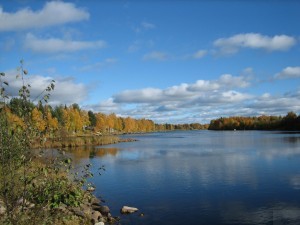
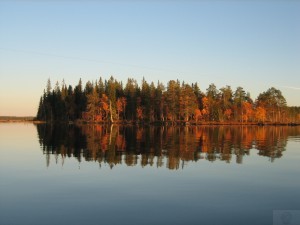
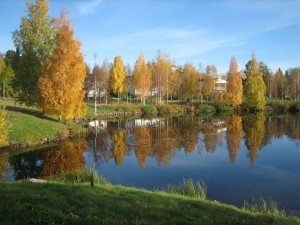
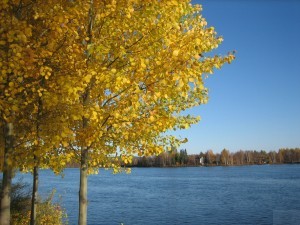
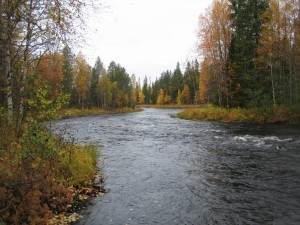


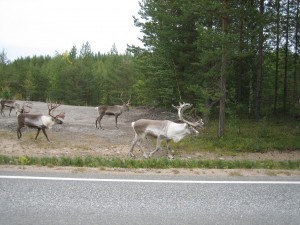


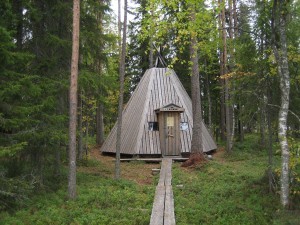

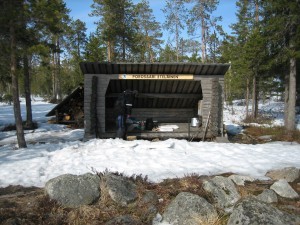
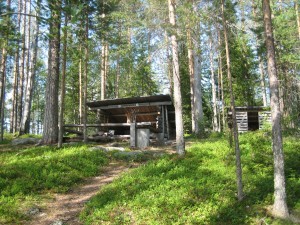

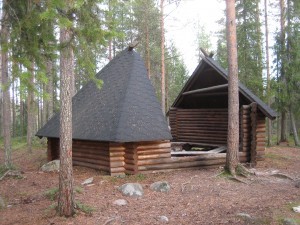
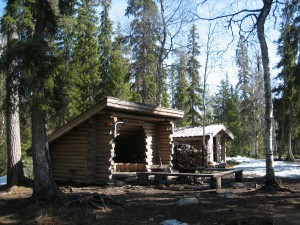

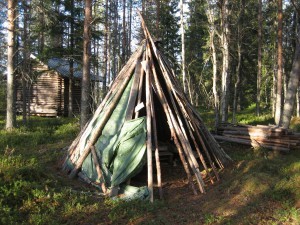
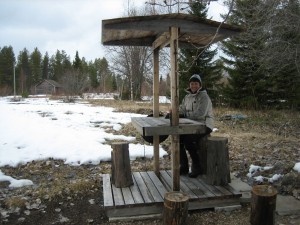

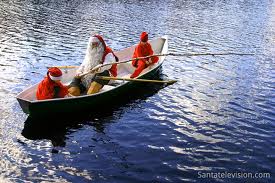

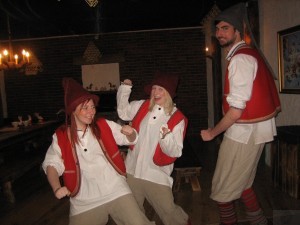
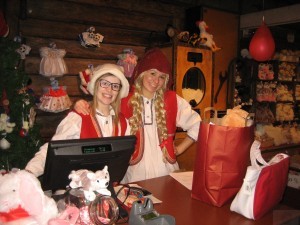
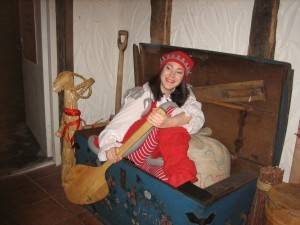

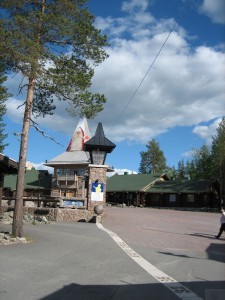 The Santa Claus village is open every day also during summer, and you can cross the Arctic Circle just outside Santa Claus’ office. In summer you can see the white line marking the Arctic Circle, which is covered by snow in winter time.
The Santa Claus village is open every day also during summer, and you can cross the Arctic Circle just outside Santa Claus’ office. In summer you can see the white line marking the Arctic Circle, which is covered by snow in winter time.